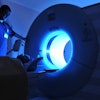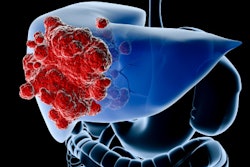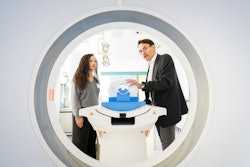The involvement of radiographers at Sweden's largest university hospital has proved vital to integrating research into clinical routine and allowing shorter lead times and a clear communication path for principal investigators.
"The radiographer's multifaceted role within a radiology research board is indispensable," Jessica Granhage, from Sahlgrenska University Hospital in Gothenburg, and colleagues told ECR 2024 attendees. "They actively engage in academic work, promote a scientific view within the workforce, and uphold ethical and regulatory standards, participant welfare, and research quality."
With a clear structure provided by imaging guides, research quality increases and the tasks performed at ground level become more manageable with concerted effort and practice, but there are pros and cons of shifting responsibilities from other personnel to radiographers, the group added.
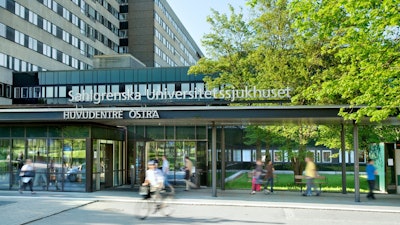 Sahlgrenska is the largest university hospital in Sweden. Photo courtesy of Västra Götalandsregionen.
Sahlgrenska is the largest university hospital in Sweden. Photo courtesy of Västra Götalandsregionen.
Sahlgrenska has one adult radiology department based in three different hospital locations as well as one pediatric unit. In 2023, it performed 259,232 imaging exams and procedures, including 221,279 at the adult department. Of these, 1.4% were performed in connection with a research study (3277 and 370 exams at the adult and pediatric department, respectively). For all these exams, study approval from the radiology research boards was required.
At the adult radiology department, about 150 to 200 research studies are continuously handled. Some of these include just a few participants, e.g., pharmaceutical phase I to III cancer research studies or technical and clinical validation studies. Others include several hundred patients, e.g., prostate cancer screening studies, and may be ongoing for several years, such as long-term outcome dementia studies.
"Research sponsors are affiliated to hospitals or universities in Gothenburg, external research institutes, or private companies such as pharmaceutical companies," the authors noted. "After shifting most of the responsibilities within the research board from academic radiologists and departmental leadership to radiographers, the work of this research board is now overseen by an academic radiologist but run by five research radiographers."
A web-based application form was designed to collect the most essential study information. This includes a check of technical and workflow feasibility, ensuring that necessary equipment and personnel are available and that logistical challenges can be met. All research is integrated in the clinical workflow and generally not performed on dedicated research equipment, but the equipment best suited for the task. Regulatory requirements are checked, as all studies need ethical approval from the ethical review authority and if applicable also from the Swedish medical products agency.
"These activities performed by the research radiographers might need support from other personnel," the authors explained. "Technology and modality responsible radiographers and radiologists might be involved to clarify technical feasibility or establish new routines or exam protocols, potentially together with dedicated physicists. Representatives of the departmental leadership might need to approve large-scale studies considering displacement effects (study subjects versus clinical workload)."
The purchase of dedicated equipment may be necessary. Academic radiologists may need to step in to assess ethical and regulatory questions, but research radiographers must make most decisions themselves and only seek approval if a specific problem is identified, they added. The research radiographer also prepares a study-specific imaging guide to allow correct handling of each subject and covers all steps from referral registration, booking, exam preparation and performance, reading and reporting, image data archiving, and data transfer. A research agreement is prepared between the department and the principal investigator, including pricing, invoicing information, and duration of the study.
Monthly research board meetings are attended by research radiographers, the board chair (an academic radiologist), and representatives for the department leadership. Medical physicists are affiliated if necessary. After a board decision is made, the principal investigator or assigned personnel approves and finalizes the imaging guide, together with the clinical radiology staff who implements the research study in the clinical workflow.
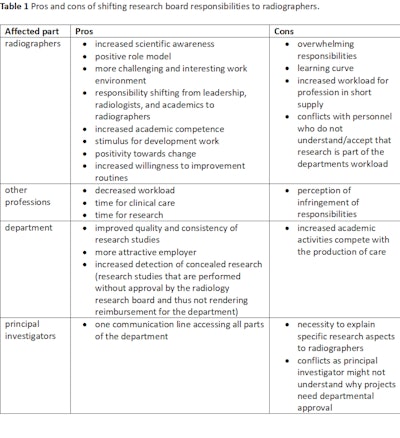 Courtesy of Jessica Granhage, Prof. Isabella Maria Björkman-Burtscher et al and presented at ECR 2024.
Courtesy of Jessica Granhage, Prof. Isabella Maria Björkman-Burtscher et al and presented at ECR 2024.
Table 1 summarizes the pros and cons of shifting research board responsibilities to radiographers. Moving research questions and responsibilities to radiographers has considerable advantages for a department and its employees and these include increased scientific awareness, positive role models, improved quality, and consistency of research studies as well as detection of concealed research, according to the authors.
"Research radiographers working within the research board appreciate the possibility to broaden one's horizons, to stimulate curiosity, to develop personal skills, to meet new people, to experience other areas of healthcare, to contribute to a stimulating work environment involving more research activities, and to be asked to participate in a research project," they stated, adding it's essential not to underestimate the difficulties of understanding and interpreting regulatory documents and dealing with researchers.
The co-authors of the ECR 2024 poster presentation were Niklas Lundqvist, Erica De Coursey, Chalermkwan Phoemsawang, Lillia Bako, and Prof. Isabella Maria Björkman-Burtscher.



